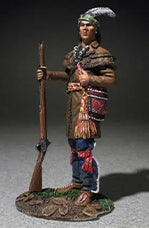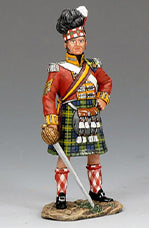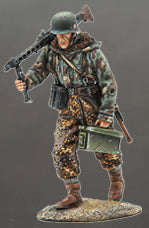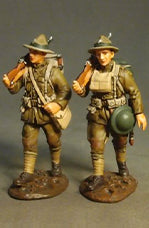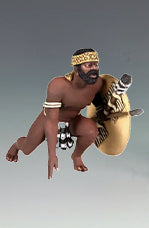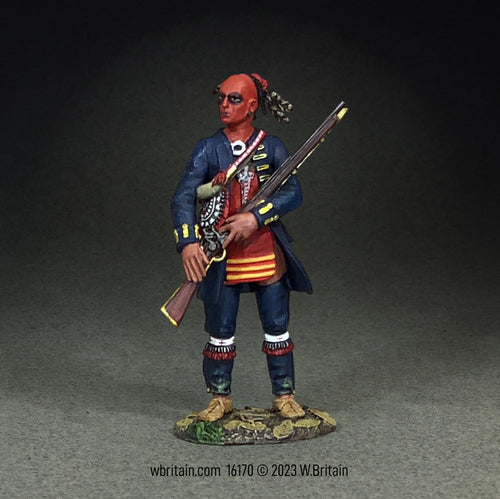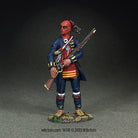16170 - "The New Trade Coat" Native Warrior with European Trade Coat
Couldn't load pickup availability
NEW! IN STOCK!
The New Trade Coat Native Warrior with European Trade Coat
Before the arrival of Europeans, Natives dressed in various animal skins and furs. Pelts were sown together to serve as coats, with the fur worn on the inside. With the influx of European trade, Natives soon discovered the advantages of wool over furs. Wool dries quicker and is not as heavy fur when wet. Even when wet, wool provides more protection from the cold and wind. Initially, trade blankets were repurposed into coats but eventually European style wool coats became favored trade items. The most frequent color appears to have been red and resembled British military coats (which may have given rise to the erroneous notion that every brave adorned thusly was wearing a “trophy coat” taken from a slain enemy), however blue wool was a favorite among many of the Southeastern Indian nations.

